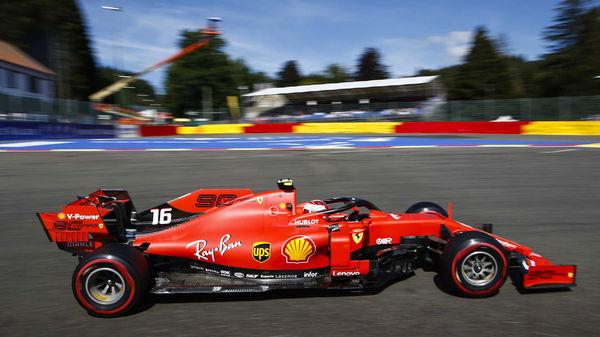What is the Difference Between Formula One, F2 and F3?

Follow Us

For the average motorsport fan, it is common knowledge that Formula One is the pinnacle of 4-wheel racing. However, to get there, aspiring drivers need to rise up the ranks, right from karts to junior racing series’.
Unofficially, the FIA Formula 2 championship is seen as the primary F1 feeder series. In fact, all three of the F1 2019 rookies, Lando Norris, George Russell and Alex Albon, moved up from there last year. However, the Formula 3 championship will also see plenty of talented drivers itching to play with the big boys.
However, one has to wonder, what is the difference between all three racing series?
ADVERTISEMENT
Article continues below this ad
Car

Modern Formula One cars have a chassis made largely of carbon-fibre composites. This helps make the car light, but extremely durable at the same time. If the construction of the car is lighter than the minimum, it can be ballasted up to add the necessary weight. It is also worth noting that all F1 team use their own chassis.
Meanwhile, in the FIA Formula 2 Championship, the same chassis is used by all teams. It features a Dallara carbon-fiber monocoque chassis powered by a Mecachrome single-turbocharged direct-injected V6 engine and Pirelli dry slick and rain treaded tyres.
Similarly, the Formula 3 chassis is used by all teams, and is also built by Dallara. Like F2, this series also implements a carbon-fiber monocoque chassis powered by a Mecachrome naturally-aspirated direct-injected V6 engine and Pirelli dry slick and rain treaded tyres. The only difference between an F2 and an F3 car is the physical shape, where the F2 cars have wider noses.

via Imago
Formula 2
Format differences
In terms of racing format, Formula One has stuck to the tried and tested three practice sessions, qualifying and the race.
Meanwhile, in Formula 2, drivers have practice sessions and one qualifying session, which determines the grid order for the feature race on Saturday. Then, on Sunday, the top 8 in the feature race will be reversed, and that will be the starting order for the sprint race.
Formula 3 follows a similar format during race weekends, with a feature race and a sprint race. The sprint race too consists of a reversed feature race Top 8, with the rest of the pack remaining as they are.
Feature races are generally longer in nature, while sprint races, true to their name, are shorter.

via Imago
Formula 3
Schedule
In terms of the schedule, two of F1’s 3 practice sessions take place on Friday, with Monaco being the exception. The third session takes place right before qualifying on Saturday. Finally, there is a warm up session, followed by the race on Sunday.
ADVERTISEMENT
Article continues below this ad
In F2, drivers have one free practice session on Friday, followed by qualifying for the feature race on the same day. After the feature race on Saturday, as mentioned before, the top 8 are reversed. So the driver finishing 8th will start on pole for the sprint race.
F3 also follows the same format as F2, with a single practice session and qualifying on Friday. On Saturday is the feature race and a reversed top 8 in the feature race will be present for Sunday’s sprint race.
Team size
ADVERTISEMENT
Article continues below this ad
Since Formula One teams have far more resources, being the pinnacle, they usually employ more personnel. However, the number of personnel also depends on available resources, so a team like Haas or Racing Point, will not have as big a crew as Mercedes or Ferrari.
Meanwhile, in F2 and F3, the lesser resources and the lesser amount of prize money, the teams will obviously be smaller.
